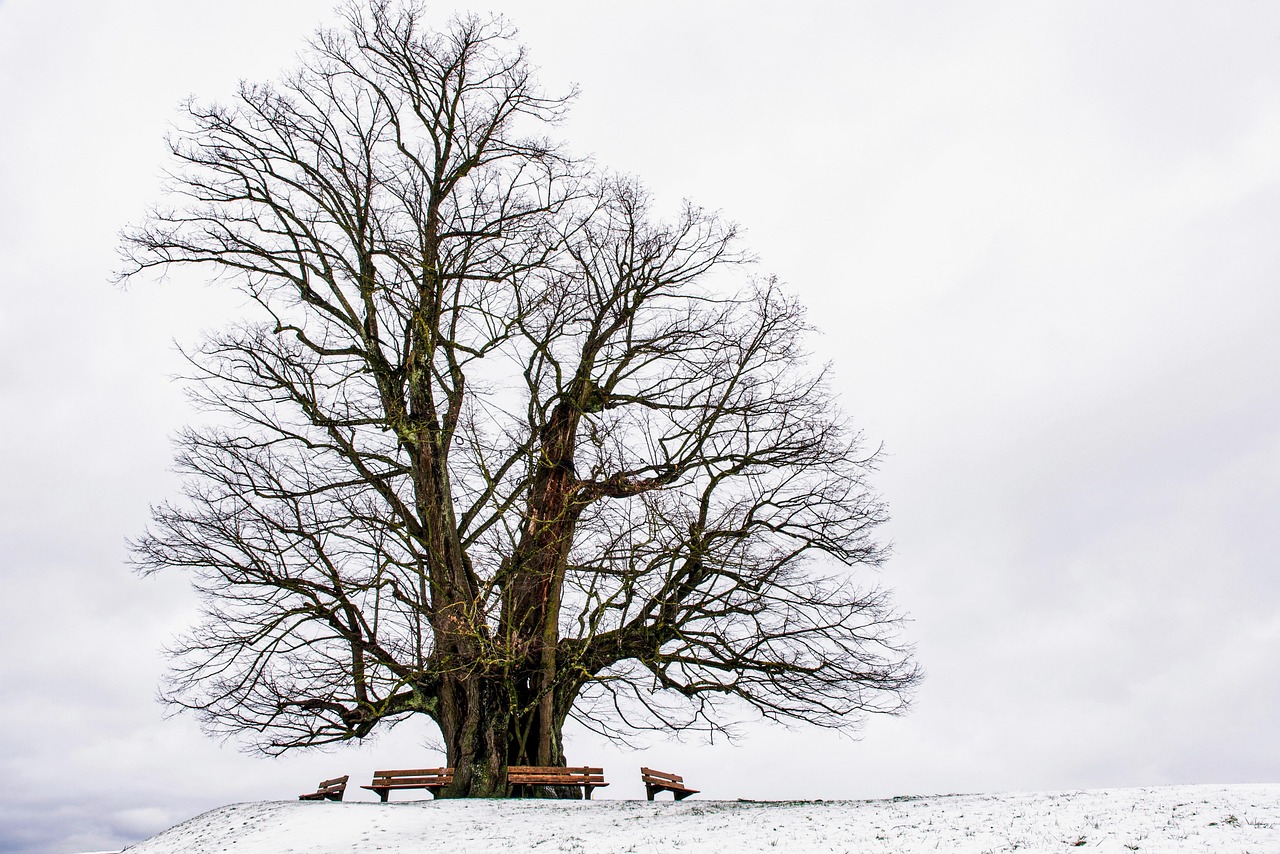The Anacua tree, scientifically known as Ehretia anacua, typically experiences a moderate growth rate of 1 to 2 feet per year in dry areas. This rate allows it to provide effective shade as it matures, making it a suitable choice for arid environments.
The Anacua tree is native to the southern regions of the United States and parts of Mexico. It thrives in dry, well-drained soils and is known for its resilience in drought conditions. This tree is particularly valued for its ability to provide shade in hot, arid climates, making it an ideal choice for landscaping in areas that experience limited rainfall.

Anacua trees are characterized by their dense canopy and broad leaves, which help to create a cool, shaded environment underneath. With the right conditions, they can grow tall enough to provide significant coverage. Understanding the growth rate and requirements of the Anacua tree is essential for landowners and landscapers looking to enhance their outdoor spaces.
Growth Rate and Factors Influencing Growth
The growth rate of the Anacua tree can vary based on several environmental factors. These factors include soil quality, water availability, sunlight exposure, and overall climate conditions. In optimal conditions, these trees can reach heights of up to 30 feet, significantly enhancing their shade-providing capabilities.
One key aspect of the Anacua tree’s growth is its adaptability. Unlike many other species that struggle in dry areas, the Anacua tree can thrive with minimal water. This adaptability makes it a popular choice for xeriscaping—landscaping that reduces or eliminates the need for supplemental water from irrigation.

| Factor | Description | Impact on Growth Rate |
|---|---|---|
| Soil Quality | Well-drained soils rich in organic matter | Promotes faster growth |
| Water Availability | Moderate watering during dry spells | Enhances growth rate |
| Sunlight Exposure | Full sun to partial shade | Optimal growth occurs with full sun |
| Climate Conditions | Warm temperatures and low humidity | Supports healthy growth |
In regions where rainfall is scarce, it is essential for gardeners and landscapers to pay attention to these factors. Providing the right conditions can lead to healthier trees that grow more quickly. The Anacua tree is often used in urban settings as well, where it can help mitigate heat through shade.
Another important consideration is pruning. Regular pruning can encourage better air circulation and light penetration, further enhancing the growth potential of the tree. Additionally, pruning helps maintain an aesthetically pleasing shape, which can be important in landscape design.
The Anacua tree is also known for its resistance to pests and diseases, adding to its appeal as a low-maintenance option for homeowners. This resilience means that once established, the tree requires less intervention compared to more fragile species, allowing it to flourish in its environment.

As the Anacua tree grows, it develops a sturdy trunk and a broad canopy. This growth pattern makes the tree a significant asset in any landscape, providing shade for patios, gardens, or playgrounds. Its shade can help lower ambient temperatures around homes and reduce energy costs associated with cooling.
Cultivation techniques play a crucial role in determining the success of Anacua trees in dry areas. When planting these trees, it is advisable to select a location that receives ample sunlight while ensuring that the soil has excellent drainage properties. Mulching around the base can also help retain moisture and control weeds.
The combination of moderate growth rate and adaptability makes the Anacua tree an excellent choice for those seeking an effective shade provider in arid climates. Understanding its needs and characteristics will help ensure that these trees thrive and provide lasting benefits for years to come.

Planting and Care for Anacua Trees
Successfully planting and caring for Anacua trees requires attention to several important factors. From site selection to ongoing maintenance, understanding the specific needs of these trees can significantly enhance their growth and longevity.
Site Selection
Choosing the right location is critical for the healthy growth of Anacua trees. Here are some key considerations when selecting a site:
- Sunlight: Anacua trees thrive in full sun, requiring at least six hours of direct sunlight each day.
- Soil Type: Well-drained sandy or loamy soils are ideal. Heavy clay soils can retain too much moisture, leading to root rot.
- Space: Ensure there is adequate space for the tree to grow both upward and outward. These trees can reach a width of 30 feet.
- Proximity to Structures: Planting away from buildings and other structures minimizes potential interference with roots and branches.
Soil Preparation
The condition of the soil is crucial for the establishment of Anacua trees. Preparing the soil before planting can lead to better growth results.
- Test Soil pH: Aim for a pH level between 6.0 and 7.5 for optimal nutrient availability.
- Add Organic Matter: Incorporate compost or well-rotted manure into the soil to improve fertility and drainage.
- Tilling: Loosen the soil in the planting area to enhance root penetration and water absorption.
Watering Practices
Proper watering is essential, especially during the establishment phase. Anacua trees have some drought tolerance once established, but young trees need regular moisture.
- Initial Watering: Water deeply immediately after planting to settle the soil around the roots.
- Frequency: During the first year, water weekly, adjusting based on rainfall and temperature.
- Drought Conditions: In periods of extreme heat or drought, supplement with additional watering as needed, ensuring not to overwater.
Fertilization and Mulching
Fertilization can boost the growth of Anacua trees, but it must be done carefully to avoid damaging the roots. Here are some guidelines:
Fertilization Guidelines
A soil test can help determine nutrient needs, but generally, a balanced fertilizer may be beneficial during the growing season.
- Timing: Fertilize in early spring as new growth begins.
- Type of Fertilizer: Use a slow-release fertilizer that provides essential nutrients over time.
- Application Rate: Follow package instructions to avoid over-fertilization, which can harm the tree.
Mulching Techniques
Mulching can help maintain soil moisture, regulate temperature, and suppress weeds around Anacua trees.
- Select Mulch Material: Organic materials such as wood chips or shredded bark work well.
- Depth: Apply mulch in a 2-4 inch layer around the base of the tree, avoiding direct contact with the trunk.
- Renew Mulch: Replenish mulch as it decomposes to maintain effective coverage.
Pest and Disease Management
Anacua trees are generally resistant to many common pests and diseases. However, regular monitoring is essential to ensure their health.
Common Pests
Pests that may occasionally affect Anacua trees include:
- Aphids: These tiny insects can weaken young leaves if present in large numbers.
- Scale Insects: Look for sticky residue on leaves; these can be treated with horticultural oil.
- Webworms: These caterpillars create webs in tree branches; prompt removal can prevent damage.
Disease Considerations
Diseases are less common with Anacua trees, but root rot can occur in overly wet conditions. Ensure proper drainage and avoid excessive watering to mitigate this risk.
By understanding the specific requirements for planting and maintaining Anacua trees, gardeners can enjoy their many benefits, including shade and resilience in dry areas. Proper care will lead to healthy, thriving trees that enhance any landscape. As they grow, their presence will contribute significantly to creating comfortable outdoor spaces.
Environmental Benefits of Anacua Trees
Anacua trees provide numerous environmental benefits, especially in dry areas where shade is crucial. Understanding these benefits can help landowners appreciate the value of including Anacua trees in their landscapes.
Shade Provision
The primary reason for planting Anacua trees is their ability to provide shade. This benefit is particularly important in arid regions where temperatures can soar. The dense foliage of the Anacua tree contributes to a cooler microclimate.
- Temperature Regulation: The shade from Anacua trees can lower surface temperatures significantly, reducing heat stress on surrounding plants.
- Energy Savings: Homes shaded by Anacua trees can experience lower cooling costs, leading to energy efficiency.
- Comfortable Outdoor Spaces: Areas shaded by these trees become more enjoyable for outdoor activities, making them ideal for parks and recreational spaces.
Wildlife Habitat
Anacua trees also support local wildlife. Their structure and foliage provide a habitat for various species.
- Birds: Many birds are attracted to the tree for nesting and feeding opportunities.
- Insects: Healthy trees can support beneficial insects that are vital for pollination.
- Mammals: Small mammals may find shelter and food sources within the branches and leaves.
Soil Erosion Control
Anacua trees play a significant role in reducing soil erosion, which is especially critical in dry areas where soil can easily become loose and washed away during rainstorms.
- Root System: The deep root system of Anacua trees helps anchor the soil, preventing erosion.
- Canopy: The tree’s canopy protects the soil from heavy rainfall, reducing the impact of raindrops that can lead to erosion.
- Soil Health: Fallen leaves contribute organic matter to the soil, improving its structure and fertility over time.
Cultural Significance
Anacua trees hold cultural significance in many regions. They are often seen as symbols of resilience and adaptability, making them popular choices for public spaces and gardens.
Aesthetic Value
The Anacua tree’s unique appearance enhances the aesthetic appeal of landscapes. Here are some of its notable visual characteristics:
- Broad Canopy: Provides a lush appearance, creating a focal point in gardens.
- Seasonal Changes: The tree showcases beautiful flowers in spring and vibrant foliage in fall, adding seasonal interest.
- Longevity: Anacua trees can live for several decades, ensuring a long-term presence in the landscape.
Cultural Practices
In some communities, Anacua trees are integrated into traditional practices. They may be planted for specific celebrations or used in landscaping to honor historical events. This cultural aspect enhances their importance beyond mere aesthetics or environmental benefits.
Challenges of Growing Anacua Trees
Despite their many advantages, there are challenges associated with growing Anacua trees that potential planters should consider.
Drought Sensitivity During Establishment
While Anacua trees are drought-tolerant once established, young trees require consistent moisture to develop properly. Challenges include:
- Water Stress: Insufficient watering during the early stages can stunt growth or lead to tree failure.
- Monitoring Needs: Careful monitoring of soil moisture levels is necessary during establishment to ensure adequate hydration.
Pest Management Challenges
As mentioned earlier, while Anacua trees are generally resistant to pests, they can still be susceptible under certain conditions. Challenges include:
- Aphid Infestations: High populations can occur, particularly during warm months, necessitating proactive measures.
- Scale Insects: These pests may require regular inspection and treatment if detected early.
By understanding both the benefits and challenges associated with Anacua trees, gardeners and landscapers can make informed decisions on incorporating these trees into their projects. Their shade, aesthetic appeal, and environmental contributions make them valuable assets in dry areas.
Long-Term Care and Maintenance of Anacua Trees
To ensure the longevity and health of Anacua trees, consistent long-term care and maintenance are essential. Once established, ongoing attention can enhance their growth and resilience in dry areas.
Seasonal Care Practices
Implementing seasonal care practices can significantly impact the health of Anacua trees. Here are some recommendations:
- Spring: This is the best time to inspect trees for any damage from winter. Pruning should be performed to remove any dead or unhealthy branches, promoting healthy growth.
- Summer: Monitor for pests and diseases during the warm months. Continue to water as needed, especially during prolonged dry spells.
- Fall: As the weather cools, rake up fallen leaves and debris to prevent disease buildup. This is also a good time to apply mulch if not done in spring.
- Winter: Protect young trees from extreme cold by wrapping the trunk with protective material. Regularly check for signs of frost damage.
Soil Health Management
Maintaining healthy soil is vital for the overall well-being of Anacua trees. Here are some strategies to consider:
- Regular Testing: Conduct soil tests every few years to monitor pH and nutrient levels. Adjustments can be made based on the results to ensure optimal growth conditions.
- Organic Amendments: Incorporate organic matter such as compost or well-rotted manure to improve soil structure and nutrient availability.
- Aeration: Occasionally aerate the soil around the tree to improve drainage and promote root health.
Community and Ecological Importance
Anacua trees do not just benefit individual properties; they also play an important role in the broader community and ecosystem.
Community Shade Initiatives
Many communities are recognizing the importance of shade trees like the Anacua in urban planning and public spaces. Initiatives may include:
- Tree Planting Programs: Local governments or organizations may initiate planting programs to increase green spaces, which can improve air quality and reduce heat islands.
- Parks and Recreation Areas: Planting Anacua trees in parks enhances recreational spaces by providing shade for visitors and wildlife habitats.
- Education: Informing residents about the benefits of planting trees can encourage more people to participate in conservation efforts.
Ecological Contributions
Anacua trees contribute to their ecosystems in several key ways:
- Biodiversity Support: By providing habitats for various species, Anacua trees help maintain local biodiversity.
- Air Quality Improvement: Trees absorb carbon dioxide and release oxygen, improving air quality for surrounding communities.
- Climate Regulation: Through their shading effects and evapotranspiration, Anacua trees help regulate local climates, making them crucial in combating heat in urban settings.
Final Thoughts
The Anacua tree stands out as a valuable addition to landscapes in dry areas due to its adaptability, growth rate, and environmental benefits. By providing shade, enhancing soil stability, supporting wildlife, and contributing aesthetically, Anacua trees are much more than just decorative plants—they are vital components of sustainable ecosystems.
Caring for Anacua trees requires attention to their specific needs, particularly during establishment. With proper planting techniques, ongoing maintenance, and community support initiatives, these trees can thrive and offer significant benefits for many years. Furthermore, as climate change continues to impact our environment, planting resilient species like the Anacua tree becomes increasingly important for fostering sustainability and enhancing urban landscapes.
In summary, Anacua trees provide essential shade in dry areas while also contributing positively to the environment and community well-being. Their moderate growth rate combined with their resilience makes them a wise choice for homeowners and cities alike who seek to create cooler, greener spaces.
